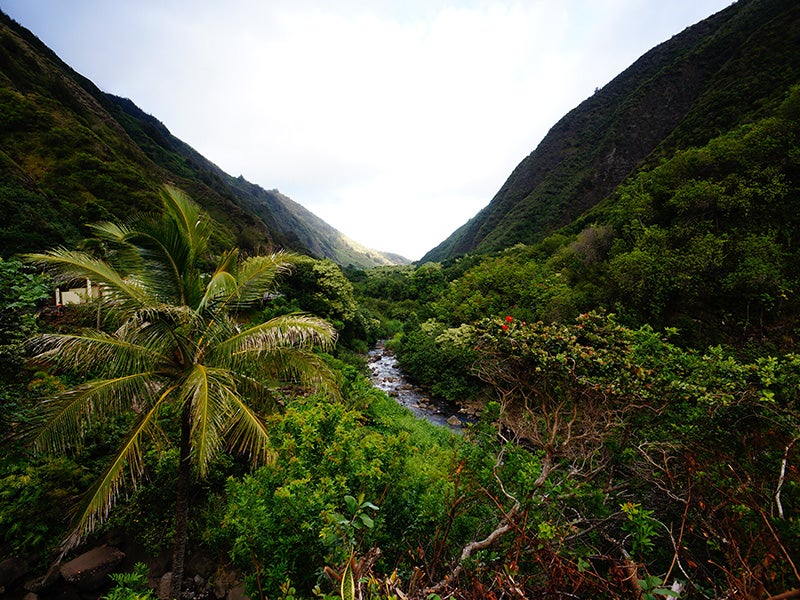Challenging Groundwater Management of Central Maui Aquifers
The ʻIao aquifer is Maui's main source of drinking water.With the close of most sugar and pineapple plantations, millions of gallons of water that used to flow into the aquifer is taken from streams and communities only to be wasted, hoarded, or sold to the highest bidder—despite the fact that water in Hawaiʻi is a public trust resource.
Regional Office / Program
Case Overview
The ʻIao aquifer is Maui’s main source of drinking water. Years of stream diversion by sugar and pineapple plantations have lowered groundwater levels and increased salt water intrusion into wells. With the close of most of these plantations, millions of gallons of water that used to flow into the aquifer is taken from streams and communities only to be wasted, hoarded, or sold to the highest bidder, despite the fact that water in Hawaiʻi is a public trust resource.
In December 2005, Earthjustice—on behalf of two Maui community groups, Hui o Na Wai ʻEha and Maui Meadows Homeowners Association—announced a groundbreaking resolution of litigation over groundwater from the ʻIao aquifer. In return for the groups and the state Office of Hawaiian Affairs withdrawing their legal challenges to the permit applications of the Maui County Department of Water Supply for groundwater from the ʻIao aquifer, Maui Mayor Alan Arakawa has committed to take the steps necessary to restore continuous base flows to streams overlying the aquifer that are currently diverted by former plantation interests.
It was an interim measure, as Earthjustice and the community groups continue to litigate in a related case to set instream flow standards that would provide minimum flows necessary to sustain public trust uses, such as ecological protection and Native Hawaiian taro farming.

Case Updates
Case page created on October 23, 2003.